Writer Grace Hill
Photographers Amy S. Martin and Travis Neely
[dropcap]H[/dropcap]ay and dust blanket the arena. The smell of animals fills the nostrils. The noise progressively increases as the excited spectators find a seat. Soon a battle will ensue — a battle of strength, speed and agility. Man versus animal and animal versus man. Man against man and man against himself. The crowd, the animals and the cowboys and cowgirls all wait with anticipation. Who will be victorious? Who will be the rodeo champion?
Before the competition begins, horseback riders carrying the American flag circle the arena. The crowd stands with pride. Pride for their country and pride for what’s to come.
Then it begins. The gate opens. Everyone cheers. The excitement spreads throughout the arena like a shock of electricity. Whether it’s bull riding, calf roping or steer wrestling, the pounding of hooves intensifies the moment. Fear prickles at the neck. One mistake could cost the cowboy.
But not this time. No, this time — the cowboy takes home the prize.
Many wonder what it would be like to experience life as a cowboy in the early days of America, when nothing separated them from the ground they worked and the animals used to work for them. These might have been the good ol’ days, when times were simpler. But they weren’t easier.
The rodeo provides a momentary glimpse into that hard life. Few other sports take us back to the beginning days of America, or exemplify the skills needed to accomplish real-world tasks. These aspects of the rodeo make it more than a sport. It’s history in action.
But how did the rodeo come about?
In the 1500s, Mexican ranchers, influenced by Spanish settlers, celebrated their ranching skills through an event called a “charreada,” or “charrería.” This celebration brought together different haciendas to not only show off their animal husbandry skills, but also parade the charros (traditional horsemen) and their masterful horseback skills.
As ranchers and cowboys settled out West, they adopted many of the livestock-handling and horse-riding techniques from the Mexican ranch hands, called vaqueros, who continued to live in the Southwest during that time. As a result, the ranchers and cowboys wanted to have their own charreadas to display their newfound skills, and from that desire birthed the rodeo.
Since then, the popularity of rodeos has spread throughout the country like wildfire, evolving from an amateur sport into a professional competition. Arizona has always welcomed the rodeo competition with open arms, and spectators have been enjoying it as a tournament in Arizona since at least July 4, 1888. The website worldsoldestrodeo.com states that’s when “a group of Prescott, Arizona merchants and professional businessmen organized the first formalized cowboy tournament and offered cash prizes,” giving Prescott the “World’s Oldest Rodeo” title.
The Payson rodeo also lays claim to a title, the “Oldest Continuous Rodeo,” since Prescott’s rodeo temporarily ceased during World War II. But those are just two of the many rodeos found throughout Arizona. From Tucson to Flagstaff, rodeos have impacted the communities that have supported them for so long.
With rodeos being a multimillion-dollar sport that includes at least 700 professional rodeos across the United States, there seems to be no slowing down. This is good news for the communities that produce them year after year. As a source of tourism revenue, small communities survive because of rodeo competitions.
But it is not just the communities that survive through rodeos. History survives — and so, too, does cowboy culture.
Share your favorite rodeo photographs with our Images Arizona Facebook or Instagram pages using the hashtags #iamAZproud and #imagesAZ.
Cave Creek Rodeo Days
March 25-April 2
Cave Creek Parade
Downtown Cave Creek Road
Saturday, March 25 at 9:30 a.m.
Free admission
Mutton Busting
Outlaw Annie’s, 6705 E. Cave Creek Rd.
Saturday, March 25 at 12:30 p.m.
Per entry $10
Rodeo Kick-Off Dance
Buffalo Chip Saloon, 6823 E. Cave Creek Rd.
Saturday, March 25 at 8 p.m.
Free admission
Golf Tourney and Award Dinner
The Tatum Ranch Golf Club
29888 N. Tatum Ranch Dr.
Harold’s Corral, 6895 E. Cave Creek Rd.
Monday, March 27 at 10:30 a.m.
(golf sign-in) & 6 p.m. (dinner)
Individual golfer $140; Foursome $560
PRCA Rodeo Performance
Cave Creek Memorial Arena, 37201 N 28th St.
Friday, March 31-Saturday,
April 1 at 7 p.m. Sunday, April 2 at 1 p.m.
General admission $20; children under 5 free with paid adult.
Stockman’s VIP tickets options:
$525 includes two tickets for VIP seating at all rodeo performances (Friday, Saturday and Sunday), dinner and cocktails.
$125 includes one ticket for VIP seating for one rodeo performance (Friday, Saturday or Sunday), dinner and cocktails.
Official Rodeo Dance
Harold’s Corral, 6895 E. Cave Creek Rd.
April 1 at 9. p.m.
Cover charge $5
Rodeo Slack
Cave Creek Memorial Arena, 37201 N 28th St.
Saturday, April 1 at 9:30 a.m.
Free admission
480-304-5634
cavecreekrodeo.com
Amy S. Martin
Hometown: Tucson
Current: Flagstaff
Photography experience: “My mother was an amateur photographer, so photography has been with me for a long time. Working as a documentary photographer, I have traveled to many parts of the globe to create visual stories about social and environmental issues, but my main focus is on projects here in the desert Southwest.”
Best photo advice received: “Just keep shooting.”
Who was or still is your mentor: “My mother was and still is my inspiration. I try to keep her spirit alive through my images by finding the beauty she showed me in the world.”
What makes great photography: “I believe that when you evoke emotion through images, you
are creating good photography.”
Why capture rodeos through photography: “I grew up in Southern Arizona, where rodeos were prevalent. Photographing rodeos to me is capturing our culture, celebrating a way of life and freezing complex action in single still frames.”
What drives your photography: “My desire is to celebrate cultural diversity and our irreplaceable natural places. My hopes are to create compelling images to break down barriers that we might have put up in our own minds.”
amysmartinphotography.com
520-471-4712
Travis Neely
Hometown: Pittsburgh, Pennsylvania
Current: Apache Junction
Photography experience: “I’ve been a commercial advertising photographer for 11 years specializing in lifestyle and landscape work.”
Best photo advice received: “For me, this quote by photographer Robert Capa has been one that’s stuck with me and has affected my work the most: ‘If your pictures aren’t good enough, you aren’t close enough.’ There’s been debate over whether he meant distance wise or emotional attachment to the subject being photographed, but I see it working both ways equally.”
Who was or still is your mentor: “I wouldn’t say I’ve ever had a mentor, but I do believe in allowing influences to shape one’s self and work. My influences are wide ranging and include authors such as Edward Abbey, the 19th-century landscape painter Albert Bierstadt and even certain business leaders like Elon Musk.”
Why capture rodeos through photography: “I’m a transplant from the urban East Coast who has embraced the Western culture since moving to Arizona two years ago. Rodeos and the cowboy lifestyle intrigue me. Most photographers shoot rodeo with telephoto lenses from afar and focus on the action itself. I shot this series with a large and slow medium-format camera with a normal focal length lens, which means I was up close and personal with the riders in the pit area. My goal was to show the in-between moments of focus and determination and the highs and lows of the emotions from the cowboys. I see the cowboy and rodeo lifestyle as a key tradition of Americana and it’s worth documenting.”


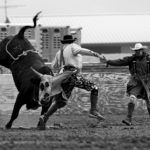
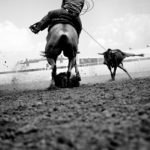
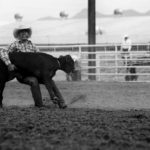
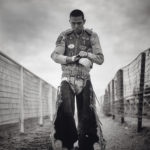

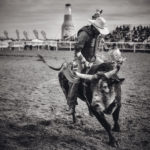
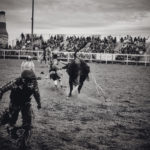
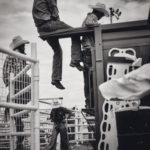
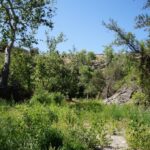
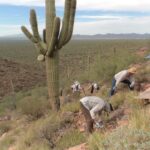
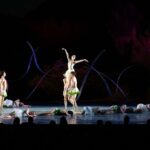
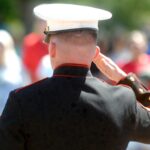

Comments by Admin